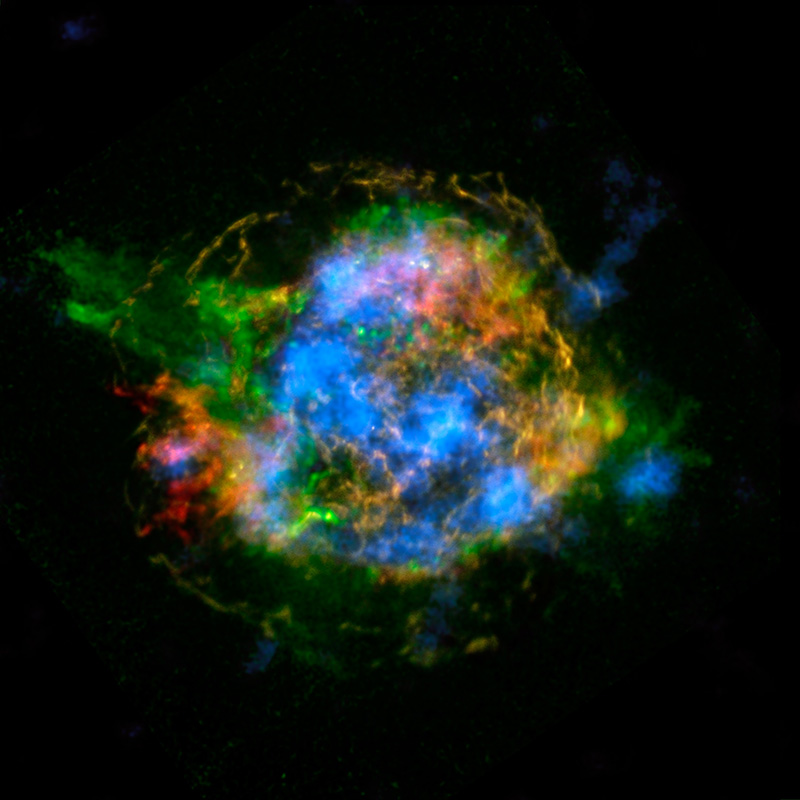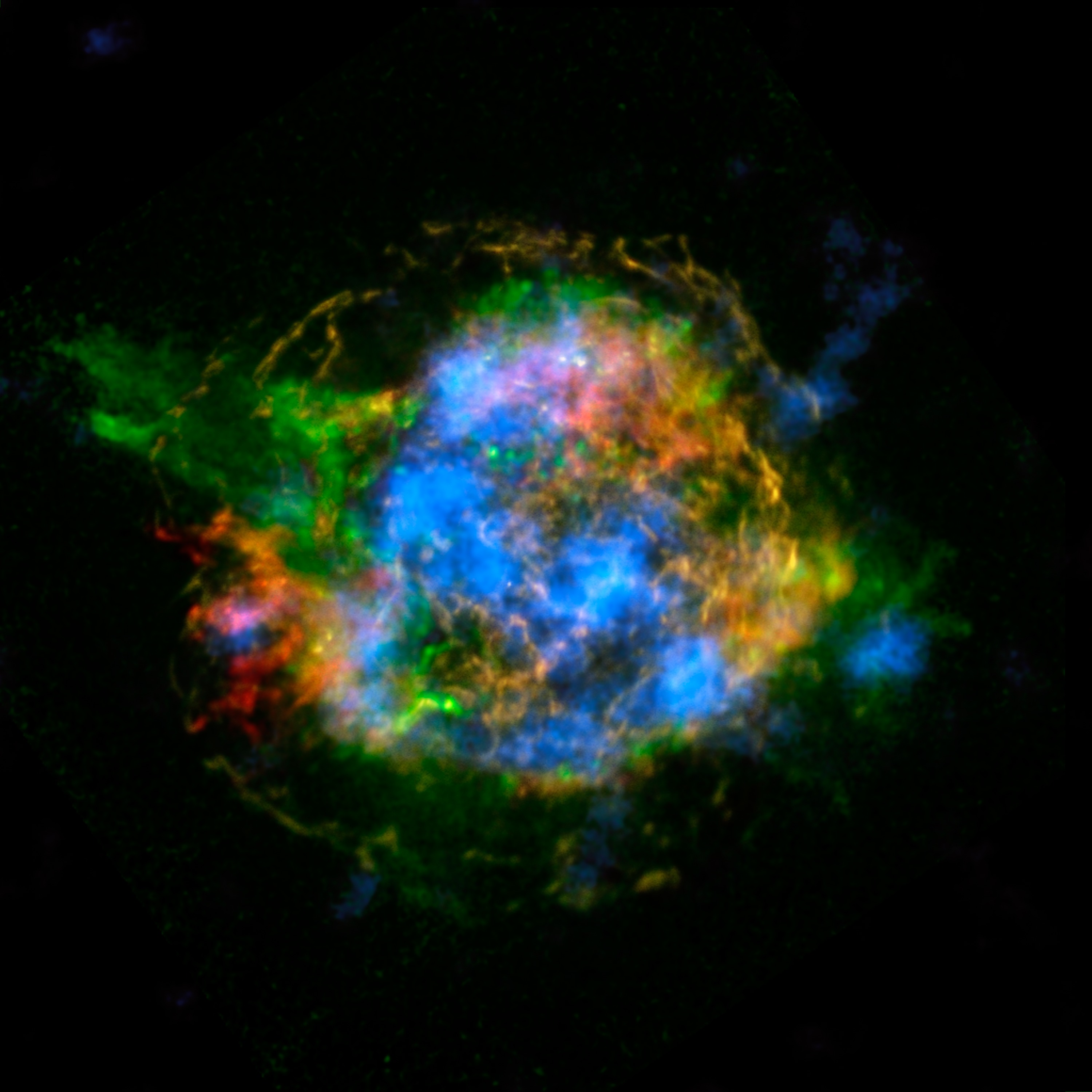Untangling the Remains of Cassiopeia A

February 19, 2014
| Credit | NASA/JPL-Caltech/CXC/SAO |
|---|---|
| Historical Date | February 19, 2014 |
| Language |
|
The mystery of how Cassiopeia A exploded is unraveling thanks to data from NASA's Nuclear Spectroscopic Telescope Array, or NuSTAR. In this image, NuSTAR data, which show high-energy X-rays from radioactive material, are colored blue. Lower-energy X-rays from non-radioactive material, imaged previously with NASA's Chandra X-ray Observatory, are shown in red, yellow and green.
More information: https://www.nustar.caltech.edu/image/nustar140219a

